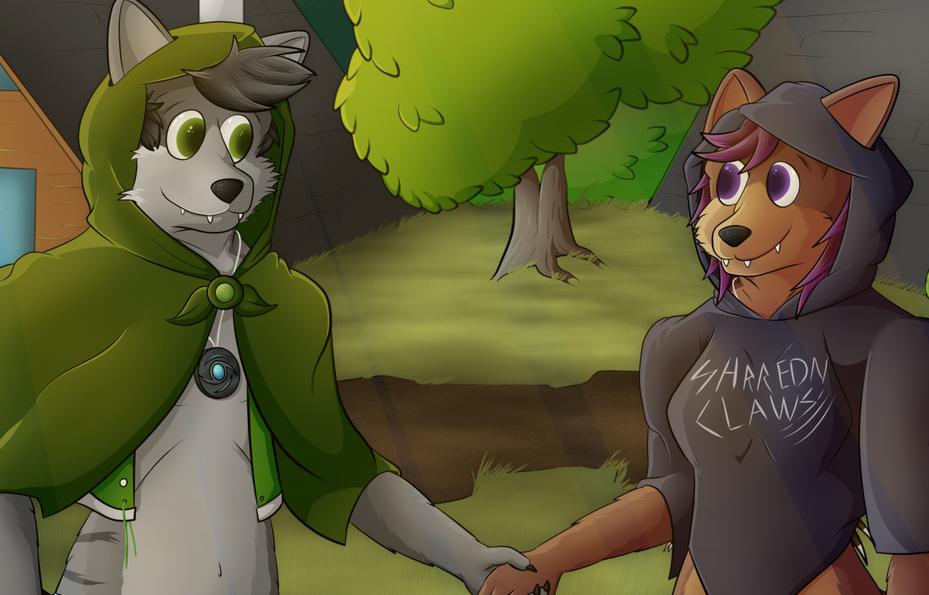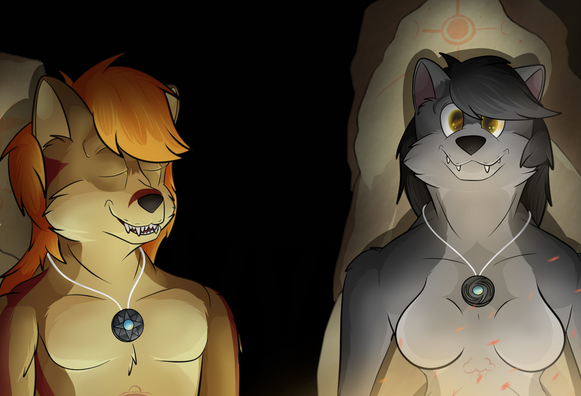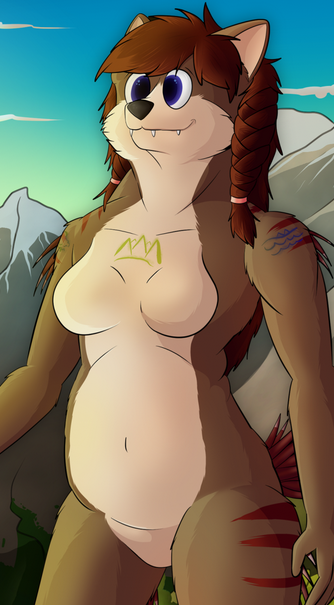>HUNT-OS V 2.15.1 - USER PROFILE: Chloe Vortex
-Viewing Wiki
Loaded Article: GenderAndSexuality.html: >_
Overview
Another aspect of arpine biology is the subject of arpine gender and sexuality, this ultimately goes into how they view gender norms and their variety of sexual practices. Arpines have two primary genders, male and female, both with their own physical attributes and associated social behaviors. Arpines also have a complex relationship with sex that ties into their social structure.
Gender and Gender Norms
Arpines have two primary genders, that being male and female. Arpines are generally very egalitarian in their views when it comes to gender, where overall arpine males and females are seen as equals to one another. This is in great part due to individuals being versatile enough on their own that anyone of either gender can fill any role such as that of a hunter, caretaker, warrior, or leader. While some physical differences between the genders exist they are not significant enough to cause social division, in fact platonic connections are common between both genders. However, the differences that do exist still play out in specific social and cultural norms.
Adult males on average stand around 6'9" (13.23 points) but in some cases can be as short as 4'11" (9.65 points) or as tall as 8'4" (16.31 points). Males tend to be more muscular in the upper body and are more physically prone to having fast bursts of energy and speed. Males can heal quickly from injuries and are also known to be able to suppress large amounts of pain. Males also have a tendency towards charitable behavior, this is likely a result of arpine males having to care for pregnant or nursing females and their own cubs in the wild. So males often tend to seek to assist their mates or close group members.
Adult females on average stand around 6'3" (12.23 points) but in some cases can be as short as 4'9" (9.32 points) or as tall as 7'10" (15.35 points). Females have a higher proportion of body fat above the waist and less muscle in their upper torso while their arms and legs are similarly muscular to a male's. Due to both having less upper body weight and hormonal factors females generally have higher stamina than males and can maintain a top speed for a longer period of time, and on top of this they can tolerate diseases quite well, this likely evolved as a way for them to carry cubs long distance without getting tired. Females also have a tendency to be incredibly protective towards their mate, cubs, and others they have close bonds with and will often seek vengeance against someone who caused the other arpine harm, even at their own detriment. This behavior is likely a result of a sense of needing to discourage and/or destroy threats to their families in the wild.
Despite these few sexual differences between the two genders they are still far more alike than they are different, and arpines express a very egalitarian view on gender where each individual is still judged by their own merits. Each arpine, regardless of gender, has the capability to become a good provider, fighter, leader, cargiver, or otherwise and has the capabilities to be very self-sufficient. Arpines will commonly form platonic bonds with those of the opposite gender, and mates are considered on equal grounds with one another when it comes to power dynamic. In fact, past the early adult years arpines commonly travel between groups in mated pairs.
However, there are some places where biological differences may show themselves such as with group hunting tactics, where females have a higher tendency to be "flankers" while males have a higher tendency to be "bulwarks".
NeilWendy.jpg

Neil Vortex (left) and Wendy Rainer (right) are a typical mated male and female pair.
GeilieSal.jpg

Geilie Hailer (right) and Sal Cloud (left) are a female and male in a platonic friendship.
Transgenderism
It is possible for gender dysphoria to manifest itself in some arpine individuals, although it is rare and only less tha n 0.09% of the arpine population is affected by this. Transgender individuals are still treated with the same mutual respect based on merit that dictates most arpine social interactions, and they are still just as accepted in arpine social circles. This makes sense given the small size of arpine groups, as discriminating a valuable pack member in the wild would be senseless. This fair treatment may help alleviate the feelings of dysphoria in some individuals although actual medical procedures and therapies to help with dysphoria and body matching were not developed until more modern times.
Sexuality and Mating
Arpines are generally bisexual while fully heterosexual or homosexual arpines make up a small minority of the population. In arpine interactions sex also provides importance beyond reproductive purposes, and it's suggested that the main purpose of sex in arpines is actually a social one. Arpines will have sex as a form of individual or group bonding activity, it also helps some arpines build trust which aids the bond-forming process. Arpines often will have sex after successful collaborative hunts or as a group response to the end of tougher times. In fact, females tend to have most of their sexual urges when they are not ovulating, whereas ovulation tends to trigger a specific type of feeling in the female which is different from normal sexual urges. The female will decide during the times of ovulation whether or not she desires cubs and will either search for a long term mate or abstain from activity depending on her desires or goals.
When it comes to sexual attraction there are a few things arpines tend to find sexually appealing. Arpines are usually very active and tend to burn fat a lot, and because of this arpines actually tend to find individuals with slightly more body fat (think "dad bod") sexually appealing since having more fat around the waist signifies a high hunting success rate, which implies dependability. Another thing arpines find sexually attractive is the ability to be self-sufficient as it also signifies dependability.
Arpines consider several criteria when selecting a long-term mate. Arpines will either mate with one individual for life, take on a couple mates at the same time, or have a small series of longer-term mates throughout their lives. Arpines will take up a long term mate for multiple reasons including a desire to procreate, need for support and stability, or (most commonly) just out of pure strong bond. An arpine's pool of potential long-term mates typically is derived from the individuals they've formed close bonds with, and they will signify their desire for a long term mate through a series of cues and interactions. Two arpines will often seal a mateship with a "love bite", a gentile gnawing at the side or back of the other's neck.
Matings may be monogamous or polygamous, but either way the strong bond is typically shared with both or all parties involved. Bonds between long-term mates are so strong that in the event of the loss of one mate an arpine may take years before they seek out a new mate, others may not re-mate at all. In cases where a relationship falls apart, however, the arpines involved will be quicker to re-mate. Long term monogamous mates may also occasionally partake in activities with a third participant or participate in sexual activities with another couple.
Estrid.jpg

Estrid Alprunner is considered a conventionally attractive female arpine.